
Lucrezia Borgia was an Italian noblewoman of the House of Borgia who was the illegitimate daughter of Pope Alexander VI and Vannozza dei Cattanei. She reigned as the governor of Spoleto, in her own right, a position usually held by Cardinals.

Pope Alexander VI was head of the Catholic Church and ruler of the Papal States from 11 August 1492 until his death in 1503. Born into the prominent Borgia family in Xàtiva in the Kingdom of Valencia under the Crown of Aragon, Spain, Rodrigo studied law at the University of Bologna. He was ordained deacon and made a cardinal in 1456 after the election of his uncle as Pope Callixtus III, and a year later he became vice-chancellor of the Catholic Church. He proceeded to serve in the Curia under the next four popes, acquiring significant influence and wealth in the process. In 1492, Rodrigo was elected pope, taking the name Alexander VI.

The House of Borgia was a Spanish noble family, which rose to prominence during the Italian Renaissance. They were from Xàtiva, Kingdom of Valencia, the surname being a toponymic from the town of Borja, then in the Crown of Aragon, in Spain.
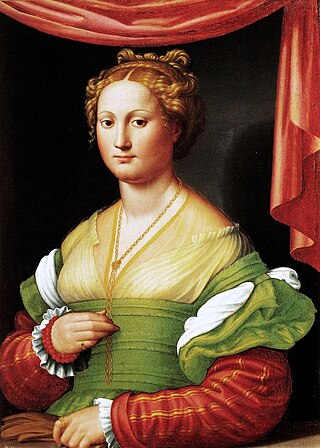
Giovanna "Vannozza" (dei) Cattanei was an Italian woman who was the chief mistress of Cardinal Rodrigo de Borgia, later to become Pope Alexander VI.

Alfonso II was Duke of Calabria and ruled as King of Naples from 25 January 1494 to 23 January 1495. He was a soldier and a patron of Renaissance architecture and the arts.
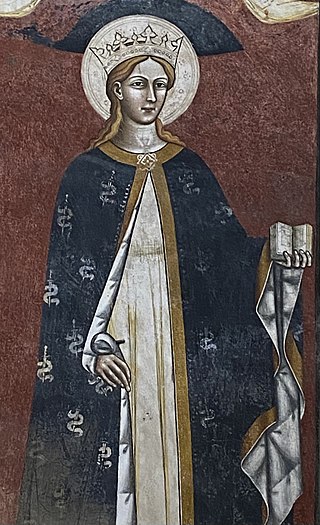
Mary of Enghien, also known as Maria d'Enghien, was ruling Countess of Lecce from 1384 to 1446 and Queen of Naples and titular Queen of Sicily, Jerusalem and Hungary from 1406 to 1414 by marriage to Ladislaus of Naples.
Joanna of Aragon was Queen of Naples as the second wife of King Ferdinand I. She served as regent of Naples between the abdication and flight of her husband's son Alfonso II on 22 February 1495 until the formal succession of Alfonso's son, Ferdinand II.

Ercole II d'Este was Duke of Ferrara, Modena and Reggio from 1534 to 1559. He was the eldest son of Alfonso I d'Este and Lucrezia Borgia.

Roberto Malatesta was an Italian condottiero, or mercenary captain, lord of Rimini, and a member of the House of Malatesta.
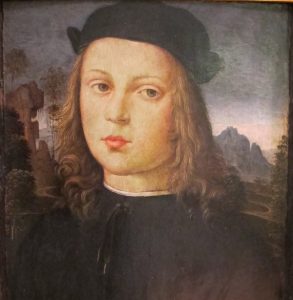
Alfonso of Aragon, Duke of Bisceglie and Prince of Salerno of the House of Trastámara, was the illegitimate son of Alfonso II King of Naples and his mistress Trogia Gazzella. His father, cousin of King Ferdinand II of Aragon, abdicated in favour of his legitimate son Ferdinand II of Naples.

Sancha of Aragon, or Sancia of Aragon, was an illegitimate daughter of King Alfonso II of Naples and his mistress Trogia Gazzella. In 1494, she was married to Gioffre Borgia, youngest son of Pope Alexander VI. Upon her marriage, she and her husband were created Prince and Princess of Squillace, a province in the south of Italy. For the majority of their marriage, Sancha and her husband lived in the Vatican with the rest of his family. There Sancha became friends with her sister-in-law Lucrezia, and allegedly had affairs with both of her husband's older brothers: Juan Borgia, 2nd Duke of Gandia, also known as Giovanni Borgia, and Cesare Borgia. Her affair with Juan is sometimes said to be the reason for Cesare's alleged murder of Juan in 1497.
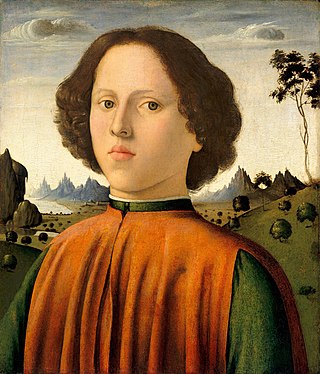
Gioffre Borgia, also known as Goffredo (Italian), or Jofré Borja (Valencian), was the youngest illegitimate son of Pope Alexander VI and Vannozza dei Cattanei, and a member of the House of Borgia. He was the youngest brother of Cesare, Giovanni, and Lucrezia Borgia.

Borgia is a historical drama television series created by Tom Fontana for Canal+, ZDF, ORF, and Sky Italia. The show recounts the Borgia family's rise to power and subsequent domination of the Papal States during the Renaissance.
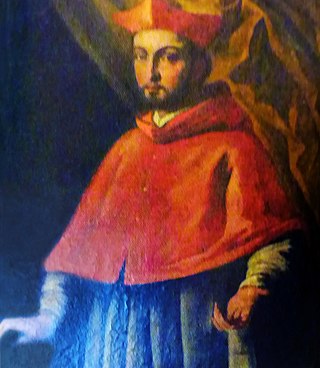
Luigi d'Aragona (1474–1519) was an Italian Roman Catholic cardinal. He had a highly successful career in the church, but his memory is affected by the allegation that he ordered the murder of his own sister and two of her children.
Goffredo is an Italian given name, cognate with Godfrey, Gottfried, Galfrid, etc. Notable people with the name include:

Prince of Squillace was a noble title created in 1494, by King Alfonso II of Naples for Gioffre Borgia on the occasion of his wedding with the king's daughter Sancia d'Aragona. He was also created Count of Cariati. His second wife was María de Mila y Aragón with whom he had issue. The male line became extinct after the death of the fourth title-holder, Pietro Borgia d'Aragona, the last male heir to hold this title.

Gian Giordano Orsini, IV Lord of Bracciano was an Italian nobleman and condottiero. He married Felice della Rovere and was the son-in-law of Pope Julius II.

Girolama Borgia was an illegitimate daughter of Cardinal Rodrigo Borgia, later Pope Alexander VI.
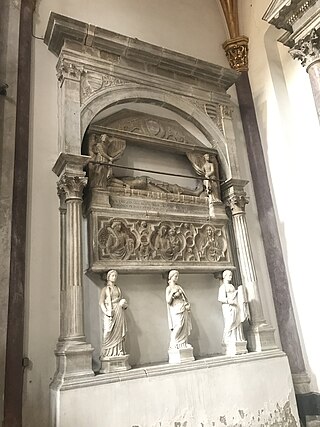
Antonio Carafa, called Malizia, was a nobleman and diplomat of the Kingdom of Naples. In the conflict between the Durazzo and Valois over the throne, he supported the Durazzo. He played a major role in the creation of the Aragonese claim to the throne and was a staunch supporter of King Alfonso V of Aragon until his death.
Goffredo Marzano was a nobleman of the Kingdom of Naples who served as grand chamberlain in 1391–1393 and 1398–1399.
















